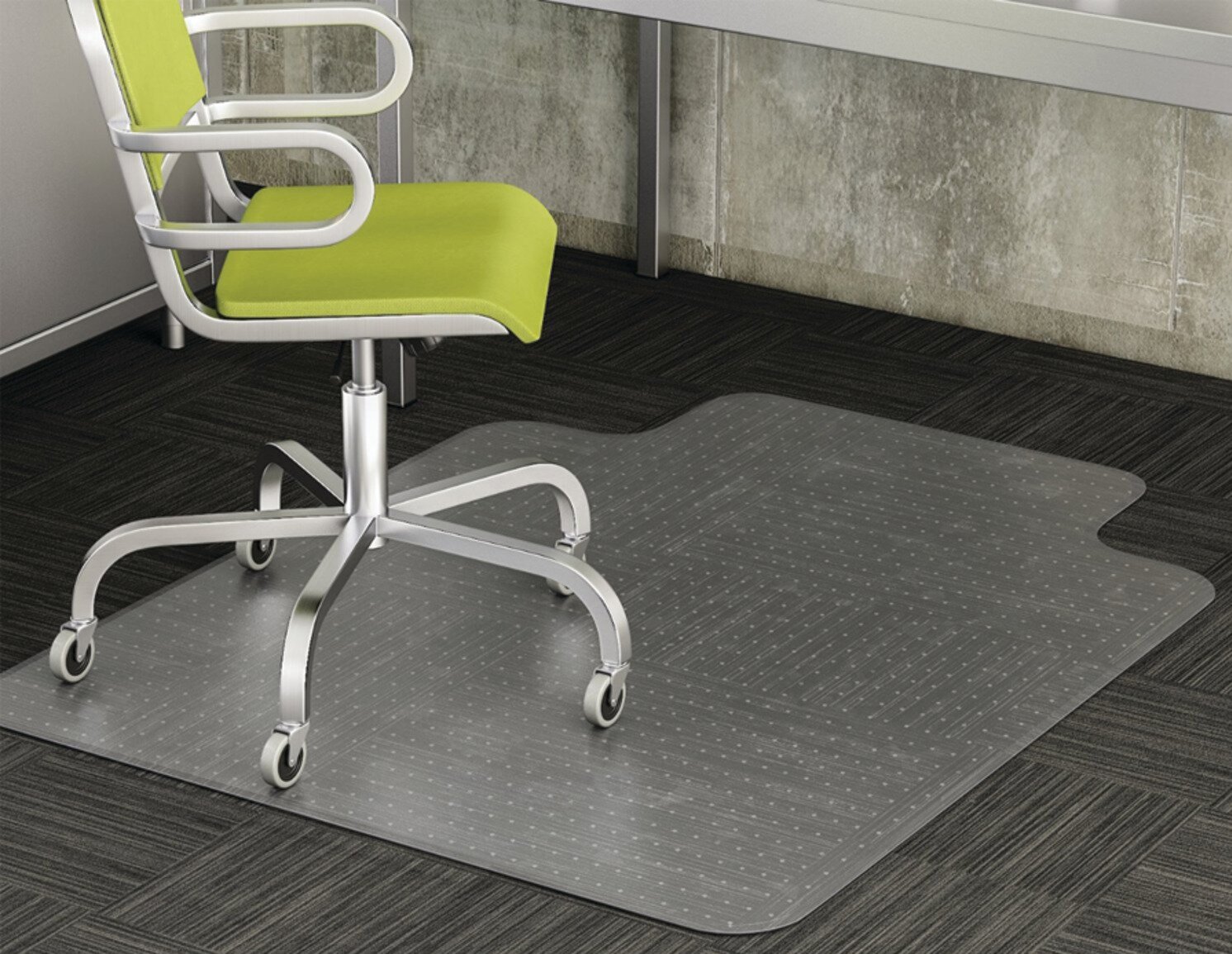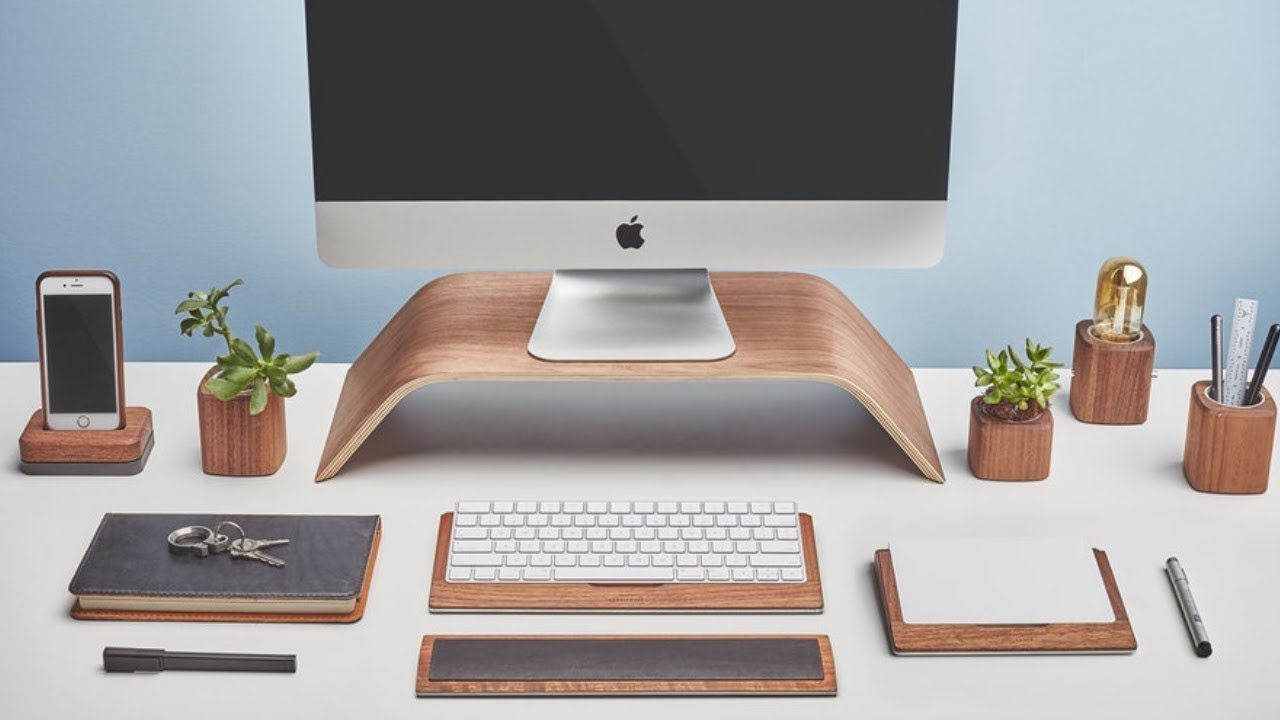If your job heavily relies on working on a computer, chances are you are no stranger to the toll that desk work can take on your body. Neck pain, backache, sore wrists and fingers, and eyestrain are just some of the many health issues associated with sedentary jobs. If you’re already experiencing these problems or you want to do everything in your power to avoid them, you might want to consider improving your workstation ergonomics.

P.S. In case you’re not your own boss, it’s quite possible that you’ll need your employer’s permission to implement a few of the changes I’m going to mention below. If they don’t seem particularly fond of this idea, please remind them that a safe and healthy work environment is a productive work environment.
Pick the Right Chair
Your office chair can be either your friend or foe. And since it is supposed to provide the proper support to your back and help you maintain the right posture, there are certain features you should consider before investing in one.

- Adjustable seat height. This gives you the chance to adjust your seat height so you can sit comfortably with your feet flat on the floor and your thighs roughly parallel to the floor. Plus, you’ll be able to keep your arms at the height of the desk which will help you maintain the proper posture.
- Adjustable backrest height & recline and tilt. Both of these features are extremely important because the first one can help provide better upper back support, whereas the second one can help reduce the stress in your spine (by changing from upright to a more reclined posture).
- Lumbar support. The ideal office chair has built-in lumbar support (among other things). Since your back is slightly curved inward, the back of your chair shouldn’t be directly vertical. The shape of the backrest should have a natural curve to support your lower back. If buying such a chair isn’t an option at the moment, you can use a lumbar support pillow.
- Comfortable seat pan cushioning. Spending approximately 8 hours a day in a chair that’s too hard or too soft is bad news. If possible, opt for a chair that is supportive without being overly hard. Such an office chair can reduce pressure points under the hips and thighs. When it comes to the material, look for breathable fabrics.
- Adjustable seat pan depth. This one will allow you to maintain a small gap (about the size of your fist) between the front of the seat pan and the back of your knees.
- Armrests. Height-adjustable armrests that can pivot inwards to support the entire length of your forearms are always a good idea.
Opt for a Quality Chair Mat

If your office has carpeted floors, purchasing a high-quality chair mat is definitely something you need to consider. Moving your chair around in order to reach your phone or a document can damage both the chair and floor surface and, more importantly, may lead to leg and back pain. This is exactly where office chair mats come in helpful and prove to be an amazing ergonomic asset to your workspace.
- Ergonomically beneficial – Yes, you read that right. A well-made mat can prevent leg fatigue and offer ease of movement. These ergonomic accessories are specially designed to reduce unnecessary stretching and straining, which makes them great for your musculoskeletal system.
- Eliminate dangerous scenarios – With a quality mat, you won’t have to worry about getting your office chair caught in the carpet and falling off it while trying to move around.
- Collaboration- and multitasking-friendly – A smoothly swerving chair makes physical collaboration and team-building so much easier. A mat can help you consult your colleagues about important business matters and move your chair from one place to another without exerting yourself.
- Protect the floor – You probably already know that chairs can leave marks and scratches on the floor and thus compromise the office’s aesthetics. If you want to keep your expensive carpet intact, investing in one of these ergonomic accessories is the way to go. Aside from your office chair, they will protect your carpet from food and coffee stains as well.
So, if you’ve been wondering, “Do I need a chair mat on carpet?”, now you know that the answer is a thousand times “yes”.
Place Your Keyboard and Mouse Thoughtfully
You don’t have to buy brand new ergonomic input devices if you want to optimize your workspace ergonomics. All you need to do is pay attention to the placement of the ones you already have. According to ergonomics experts, your keyboards and mice should be as close together as possible, placed within easy reach and on the same surface.

When it comes to positioning your keyboard, you might want to focus on the keys. This is necessary because most keyboards are asymmetrical, i.e. the number pad is on the right. Centring the alphanumeric part of your keyboard (specifically the “B” or “H” key) on your desk is the perfect ergonomic solution because it helps you maintain your “natural posture” (the posture in which your vertebrae are stacked and your back moves freely as you breathe). The height matters as well, so make sure to position your keyboard about 5 cm above your thighs.
You should be able to comfortably put your hands on your mouse without leaning forward. If that’s not your case, please consider moving this input device closer to your body so you can reach it with your elbows resting at your sides. In addition to this, consider using keyboard shortcuts to reduce extended mouse use and, if possible, adjusting its sensitivity so you can just lightly touch it to operate it.
Position Your Monitor Properly

Believe it or not, a badly positioned monitor or display device of any kind can cause headaches as well as neck and shoulder pain. This is why you need yours to be placed around 50 cm in front of you or at arm’s length. If you put it too close to your body, you’ll most likely suffer from eye strain, whereas if you put it too far away, chances are you’ll slouch forward as you’ll try to read what’s on the screen. Luckily though, today you can find various over-the-counter formulas that support eye health and relieve eye strain.
Aside from the eye-to-screen distance, you need to also pay attention to the height of your screen. The recommended screen height is the one that allows your outstretched middle finger to point to the screen centre to accommodate your natural downward gaze. The top line of the screen should be at or slightly below eye level.
Furthermore, your display device should be placed at an angle of 10 to 20 degrees. Tilt your monitor so that the top is slightly farther away than the bottom. For comfortable viewing, make sure the screen is glare-free. Speaking of which, increasing your screen contrast and brightness, using a white background, using an anti-glare filter, and repositioning your screen are great ways to minimize or eliminate screen glare.
Get Up and Move Around

It goes without saying that you need to stretch your legs and the rest of your body as frequently as possible during your working hours. You simply must make an effort. Walk down the hall, get a drink, or look out a window – it’s entirely up to you, just make sure you do it once every hour.












